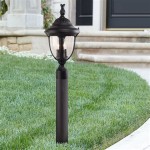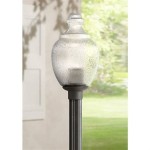Lighting for Outdoor Portrait Photography
Outdoor portrait photography offers a unique set of challenges and opportunities when it comes to lighting. While natural light is readily available, it can be unpredictable and require careful manipulation to achieve desired results. This article delves into the essential aspects of lighting for outdoor portrait photography, providing guidance on maximizing light quality, controlling direction, and achieving stunning images.
Understanding Natural Light Quality
Natural light is classified into three main qualities: direct sunlight, shade, and overcast. Direct sunlight, characterized by its intensity and harsh shadows, presents both opportunities and challenges. It can create dramatic portraits but often results in high contrast and blown-out highlights. Shade, on the other hand, offers softer, diffused light that is ideal for flattering skin tones and reducing harsh shadows. Overcast skies provide even, soft light that minimizes shadows and creates a more balanced exposure. Understanding the characteristics of each light quality allows photographers to select the most appropriate setting and time of day for their shoot.
Controlling Light Direction
The direction of light plays a pivotal role in creating mood and shaping the subject's features. Front lighting, where the light source is directly in front of the subject, is generally considered less flattering as it flattens features and lacks depth. Side lighting, with the light source coming from the side, creates dramatic shadows and adds dimension to the subject's face. Backlighting, where the light source is behind the subject, creates a halo effect and can produce silhouettes or rim lighting. By strategically positioning the subject in relation to the light source, photographers can control the direction of light and sculpt the subject's form.
Utilizing Reflectors and Diffusers
Reflectors and diffusers are essential tools for modifying natural light and achieving desired effects. Reflectors bounce light back onto the subject, filling in shadows and brightening areas. They come in various materials such as silver, gold, and white, each influencing the color and intensity of reflected light. Diffusers, on the other hand, soften and scatter light, reducing harshness and creating a more even illumination. By strategically using reflectors and diffusers, photographers can manipulate the quality and direction of natural light, achieving a balanced and flattering exposure.
Golden Hour Photography
The golden hour, occurring shortly after sunrise and before sunset, is often considered the most magical time for outdoor photography. The low angle of the sun creates warm, soft light that casts long shadows and produces a golden hue. The diffused quality of golden hour light is ideal for creating romantic and ethereal portraits. Photographers should plan their shoots during these times to maximize the benefits of this beautiful natural lighting condition.
Utilizing Artificial Light
While natural light is the primary source for outdoor portrait photography, artificial light can be used to supplement or enhance the existing lighting conditions. Portable flash units, continuous lights, and LED panels can provide a controlled light source, allowing photographers to add fill light, create dramatic effects, or illuminate dimly lit areas. Artificial light can be used to create specific moods or highlight desired features in the composition.
Understanding Exposure
Exposure, the amount of light that reaches the camera sensor, is crucial for achieving a well-balanced image. The aperture, shutter speed, and ISO sensitivity all interact to control exposure. When shooting outdoors, photographers need to be mindful of the changing light conditions and adjust exposure settings accordingly. Using a light meter or analyzing the histogram can help ensure correct exposure and prevent blown-out highlights or underexposed shadows.
Working with Shadows
Shadows are an inherent part of outdoor portrait photography and can be used creatively to add depth, dimension, and mood to images. By understanding how shadows fall and interact with light, photographers can utilize them to accentuate features, create leading lines, or suggest mystery. However, it's important to avoid harsh shadows that obscure important details or create distracting patterns. Strategically using reflectors or adjusting the subject's position can help control shadows and enhance the overall composition.

11 Outdoor Portrait Photography Tips For Easy Shots

11 Outdoor Portrait Photography Tips For Easy Shots

Off Flash Vs Natural Light Which Is Best For Outdoor Portraits Shutterbug

Lighting Set Ups Portrait Photography Essentials Outdoor

The Best Lighting For Outdoor Photography Focus

Reflector My Secret Weapon In Portrait Photography Oded Wagenstein

Pin By David Casimer On Photography Ideas Lighting Setup Portrait Studio

Off Flash Vs Natural Light Which Is Best For Outdoor Portraits Shutterbug

11 Outdoor Portrait Photography Tips For Easy Shots

Using Lights For Outdoor Night Time Portrait Photography







